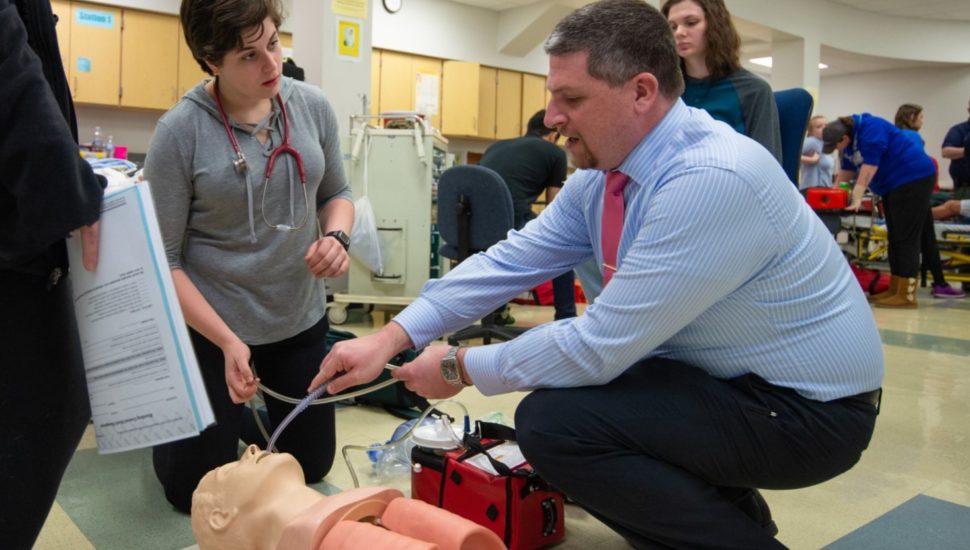The Future of Paramedic Education: Wilmington University Doctoral Alum Makes Impact in Community

Dr. Christopher Boyer admits that public service is in his genes. Many of his relatives are firefighters, so it just seemed natural for him to follow the tradition and become a first responder. In 2003, he earned an A.A.S. in Paramedic Technology at the Pennsylvania College of Technology. He continued his passion for learning by earning degrees in Health Care Administration and Public Administration. Dr. Boyer further honed his skills by serving as a critical care flight paramedic, director of Emergency Medical Services at St. Francis Hospital in Wilmington, and faculty member in the Paramedic Program at Delaware Technical Community College.
Meanwhile, he dreamed of taking on a leadership role in improving paramedic education: to train highly skilled technicians who not only understand theory but are able to make wise life and death decisions under pressure. But taking on an academic leadership role would require a doctoral degree and additional business management skills. And Wilmington University’s Doctor of Business Administration program provided the perfect solution for addressing those needs.
Leadership and management skills are particularly critical now in designing paramedic education because there are so many technical and financial challenges. Health care is a dynamic field, with new approaches and equipment constantly being developed. As first responders, paramedics must be experts in all of the latest options and must be able to deploy them appropriately under highly stressful circumstances. So it’s essential that paramedic education covers both theory and practice as effectively as possible. Traditionally, classroom training focused mostly on theory. Although there was isolated task training, it did not fully prepare students for their fieldwork. Paramedic students who had little practical experience were treating some patients.
High fidelity simulation instruction offers a promising option to address this problem. However, simulators are expensive, ranging from $10,000 to $100,000 per unit, with multiple units required to handle a classroom of students, along with instructor training and ancillary expenses. While previous research had shown student improvements on examinations after using simulation, no research had demonstrated improved outcomes with real patients. It was unclear whether the considerable expense could be justified.
Fortunately, in his doctoral research, Dr. Boyer was able to demonstrate that students who used high fidelity simulators required 19 percent fewer patient contacts to fully demonstrate mastery compared to those not using such simulators. When you consider that possible negative outcomes for patients who don’t receive optimal emergency care, the importance of this improvement is huge.
After earning his DBA, Dr. Boyer accepted an exciting opportunity to serve as director of Paramedic Technology Programs at his alma mater, the Pennsylvania College of Technology, an affiliate of Penn State. He will now be able to have a significant impact because paramedic education is undergoing a major redesign throughout the U.S. Current curriculum guidelines that were developed in the 1990s are outdated. Therefore, a major initiative, EMS Agenda 2050, is underway to develop a new and collaborative instructional vision. Dr. Boyer will be empowered to set the stage for paramedic education at his college for years to come. Of course, he expects high fidelity simulators to play an important role in the classroom and in field training, and real time data will be used to provide immediate feedback.
Dr. Boyer’s commitment to public service continues to guide him as he leads paramedic education to a higher level. Thanks to him and other leaders in the field, tomorrow’s paramedic students will be better prepared for their critical role.
Click here to learn more about Wilmington University.
__________
Dr. Ruth Norman is a professor in the College of Business at Wilmington University.
[uam_ad id=”62465″]
Join Our Community
Never miss a Delaware County story!
"*" indicates required fields










![95000-1023_ACJ_BannerAd[1]](https://delco.today/wp-content/uploads/sites/3/2023/03/95000-1023_ACJ_BannerAd1.jpg)





















